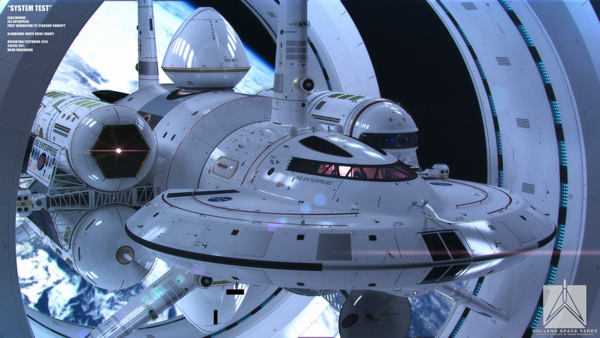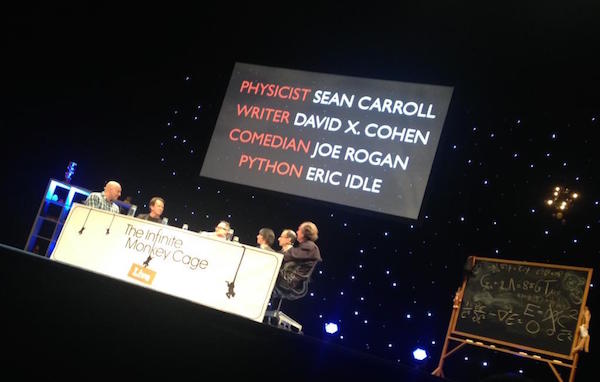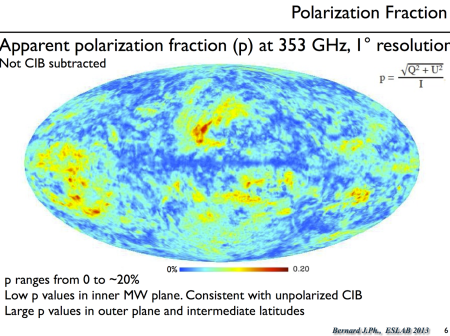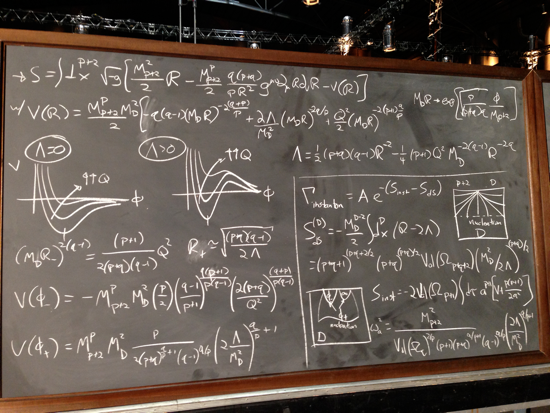A bit ago, the news streams were once again abuzz with claims that NASA was investigating amazing space drives that violate the laws of physics. And it’s true! If we grant that “NASA” includes “any person employed by NASA,” and “investigating” is defined as “wasting time and money thinking about.”
I say “again” because it was only a few years ago that news spread about a NASA effort aimed at a warp drive, a way to truly break the speed-of-light limit. Of course there are no realistic scenarios along those lines, so the investigators didn’t have any tangible results to present. Instead, they did the next best thing, releasing an artist’s conception of what a space ship powered by their (wholly imaginary) warp drive would look like. (What remains unclear is how the warpiness of the drive affected the design of their fantasy vessel.)

The more recent “news” is not actually about warp drive at all. It’s about propellantless space drives — which are, if anything, even less believable than the warp drives. (There is a whole zoo of nomenclature devoted to categorizing all of the non-existent technologies of this general ilk, which I won’t bother to keep straight.) Warp drives at least inspired by some respectable science — Miguel Alcubierre’s energy-condition-violating spacetime. The “propellantless” stuff, on the other hand, just says “Laws of physics? Screw em.”
You may have heard of a little thing called Newton’s Third Law of Motion — for every action there is an equal and opposite reaction. If you want to go forward, you have to push on something or propel something backwards. The plucky NASA engineers in question aren’t hampered by such musty old ideas. As others have pointed out, what they’re proposing is very much like saying that you can sit in your car and start it moving by pushing on the steering wheel.
I’m not going to go through the various claims and attempt to sort out why they’re wrong. I’m not even an engineer! My point is a higher-level one: there is no reason whatsoever why these claims should be given the slightest bit of credence, even by complete non-experts. The fact that so many media outlets (with some happy exceptions) have credulously reported on it is extraordinarily depressing.
Now, this might sound like a shockingly anti-scientific attitude. After all, I certainly haven’t gone through the experimental results carefully. And it’s a bedrock principle of science that all of our theories are fundamentally up for grabs if we collect reliable evidence against them — even one so well-established as conservation of momentum. So isn’t the proper scientific attitude to take a careful look at the data, and wait until more conclusive experiments have been done before passing judgment? (And in the meantime make some artist’s impressions of what our eventual spaceships might look like?)
No. That is not the proper scientific attitude. For a very scientific reason: life is too short.
There is a more important lesson here than any fever dreams about warp drives: how we evaluate scientific claims, especially ones we encounter in the popular media. Not all claims are created equal. This is elementary Bayesian reasoning about beliefs. The probability you should ascribe to a claim is not determined only by the chance that certain evidence would be gathered if that claim were true; it depends also on your prior, the probability you would have attached to the claim before you got the evidence. (I don’t think I’ve ever written a specific explanation of Bayesian reasoning, but it’s being discussed quite a bit in the comments to Don Page’s guest post.)
Think of it this way. A friend says, “I saw a woman riding a bicycle earlier today.” No reason to disbelieve them — probably they did see that. Now imagine the same friend instead had said, “I saw a real live Tyrannosaurus Rex riding a bicycle today.” Are you equally likely to believe them? After all, the evidence you’ve been given in either case is pretty equivalent. But in reality, you’re much more skeptical in the second case, and for good reason — the prior probability you would attach to a T-Rex riding a bicycle in your town is much lower than that for an ordinary human woman riding a bicycle.
The same thing is true for claims about new technology. If someone says, “NASA scientists are planning on sending a mission to Jupiter’s moon Europa,” you would have no reason to disbelieve them — that’s just the kind of thing NASA does. If, on the other hand, someone says “NASA scientists are building a space drive that violates Newton’s laws of motion” — you should be rather more skeptical.
Which is not to say you should be absolutely skeptical. It’s worth spending five seconds asking about what kind of evidence for this outlandish claim we have actually been given. I could certainly imagine getting enough evidence to think that momentum wasn’t conserved after all. The kind of thing I would like to see is highly respected scientists, working under exquisitely controlled conditions, doing everything they can to be hard on their own work, subjecting their experiments to intensive peer review, published in refereed journals, and ideally replicated by competing groups that would love to prove them wrong. That’s the kind of thing we got, for example, when the Higgs boson was discovered.
And what do we have for our propellantless space drive? Hmm — not quite that. No refereed publications — indeed, no publications at all. What started the hoopla was an article on a web forum called NASAspaceflight.com. Which sounds kind of respectable, until you notice it isn’t affiliated with NASA in any way. And the evidence that the article points to is — wait for it — a comment on a post on a forum on that very same web site. Admittedly, the comment was written by someone who actually does work for NASA. But, not to put too fine a point on it, lots of people work for NASA. The folks in this particular “Eagleworks” group at Johnson Spaceflight Center are a group of enthusiasts who feel that gumption and a bit of elbow grease might possibly enable them to build spaceships that do things beyond what the laws of physics might naively let you do.
And good for them! Enthusiasm is a virtue. Less virtuous is taking people’s enthusiasm at face value, rather than evaluating claims soberly. The Eagleworks group has succeeded in producing, essentially, nothing at all. Their primary mode of communication seems to be on Facebook. NASA officials, when asked by journalists for comment on the claims they leave on websites, remain silent — they don’t want to have anything to do with the whole mess.
So what we have is a situation where there’s a claim being made that is as extraordinary as it gets — conservation of momentum is being violated. And the evidenced adduced for that claim is, how shall we put it, non-extraordinary. Utterly unconvincing. Not worth a minute’s thought. Let’s get on with our lives.






